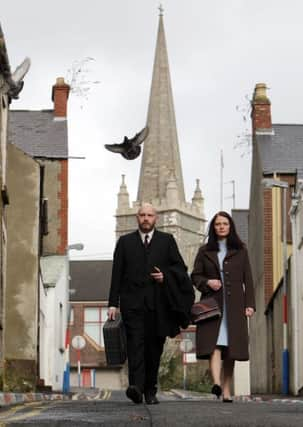Fountain residents bid for‘Exodus’ memorial trail


Community stalwart William Temple told the Sentinel the proposed trail - including signage and interpretation - would more vividly portray the widespread migration of Protestants during the Troubles.
He said residents wanted to build on existing Fountain and Walled City tours that have been run out of the Thiepval Gallery for the past five years or so.
Advertisement
Hide AdAdvertisement
Hide AdWhilst Mr Temple said he would personally prefer the centrepiece of the tour to be a lived-in terraced house with a small plaque in memory of the thousands who moved across the river and further afield, an alternative could be a small memorial garden on Wapping Lane.


He said: “There’s nothing visually here to explain the ‘exodus’ of the Westbank and...give us something visually that people can see, stop at, you can take them into it, and explain it to them, whereas at the moment there’s nothing.”
Critical to the proposal is the fate of the old Sinclair shirt factory at the bottom of Wapping Lane. Designed and built in 1863 by local architect A McElwee, the historic building was placed on the market in 2010.
It’s been suggested the factory could be used for a variety of purposes. As far as the residents are concerned any development will have to dovetail with their wishes - one of which is the ‘Exodus’ trail.
Advertisement
Hide AdAdvertisement
Hide Ad“It’s a matter of creating a beginning and an end, more or less, tour guides who have been instructed in all the facts regarding the Fountain. So it’s getting the visual aids of the tour. You can talk but if you have visual aids and places that people can see, they can identify with it and it registers better in their mind.
“There is nothing to show the ‘exodus’ from the Westbank and yet the Fountain was crucial for the easy and quick movement by decamping from the vulnerable areas where people felt threatened and under attack on the Westbank. There wasn’t the houses ready for them on the Eastbank to move into.
“So the Fountain provided the transitional stage until the houses would be ready. People that had been here for maybe six months, eight months, as soon as they moved to the Waterside, another vulnerable family moved in. So that’s the way - for 25 years - that’s how the Fountain operated.”